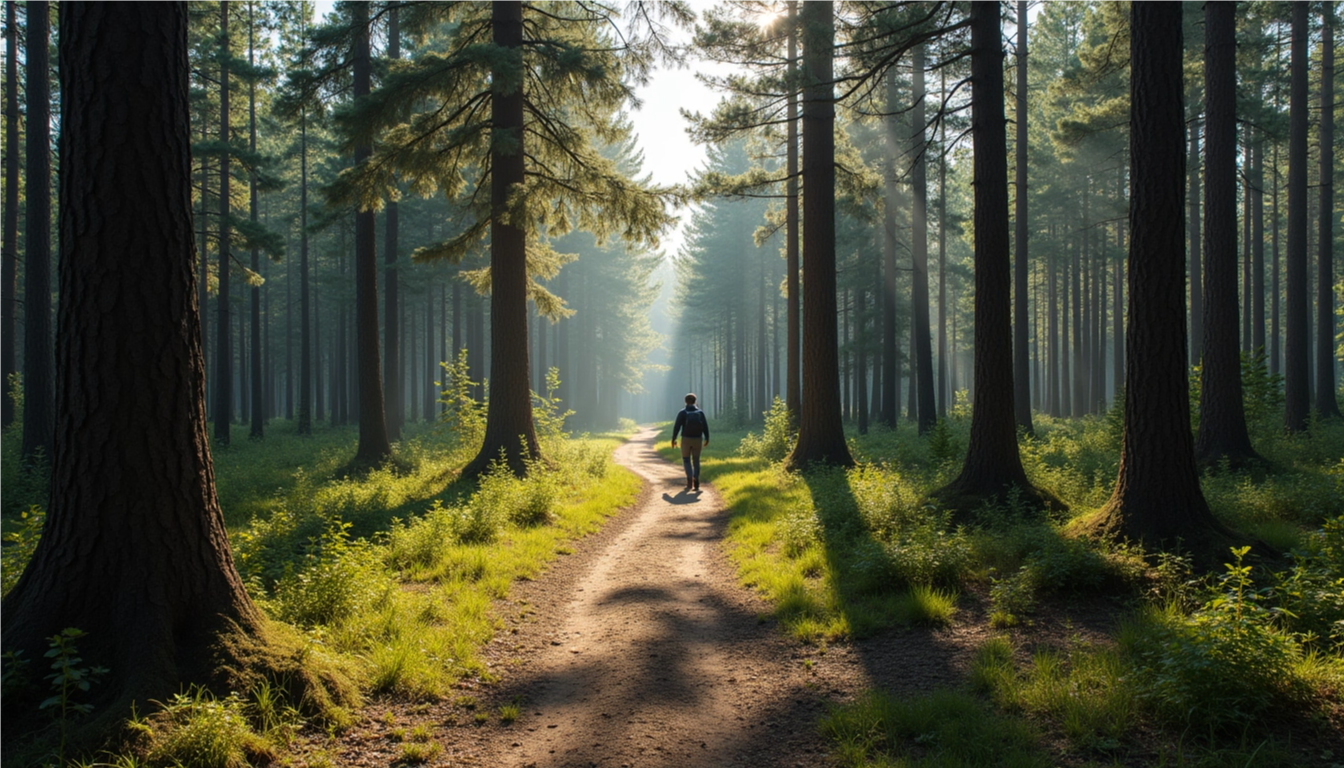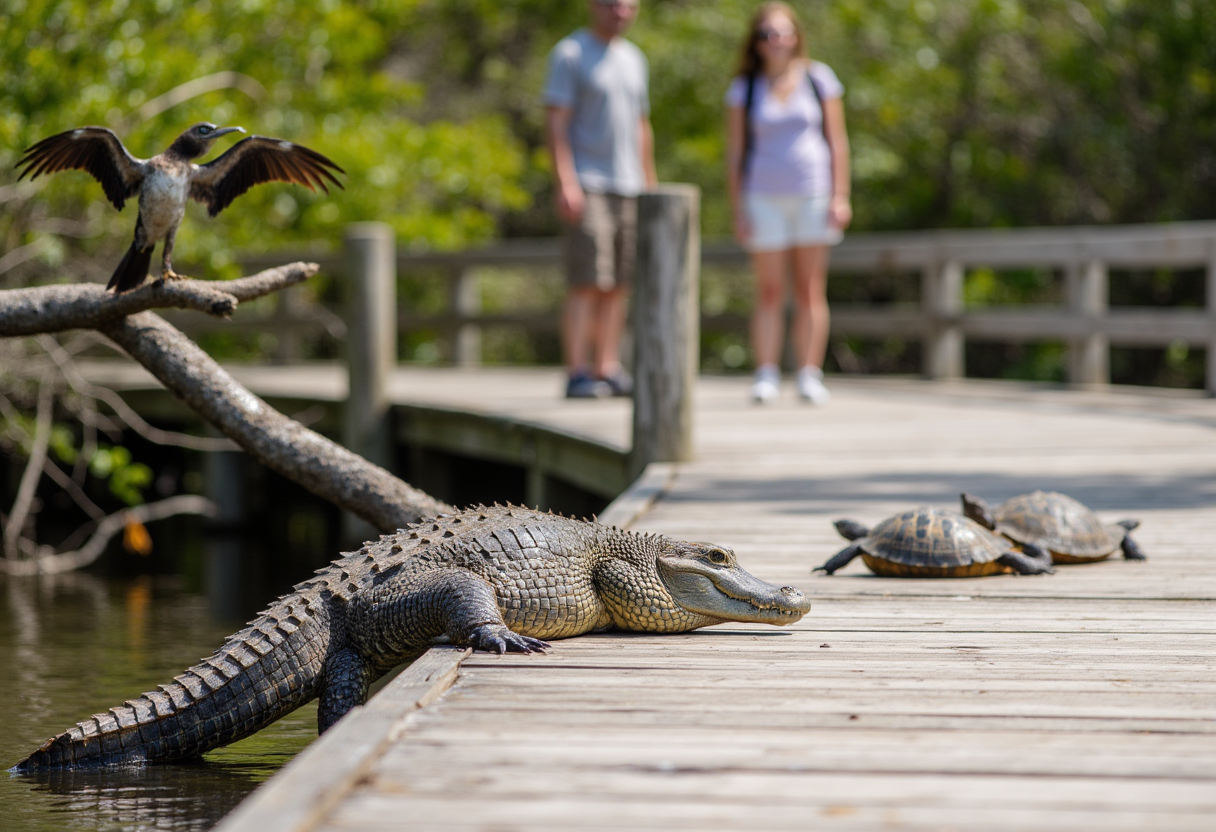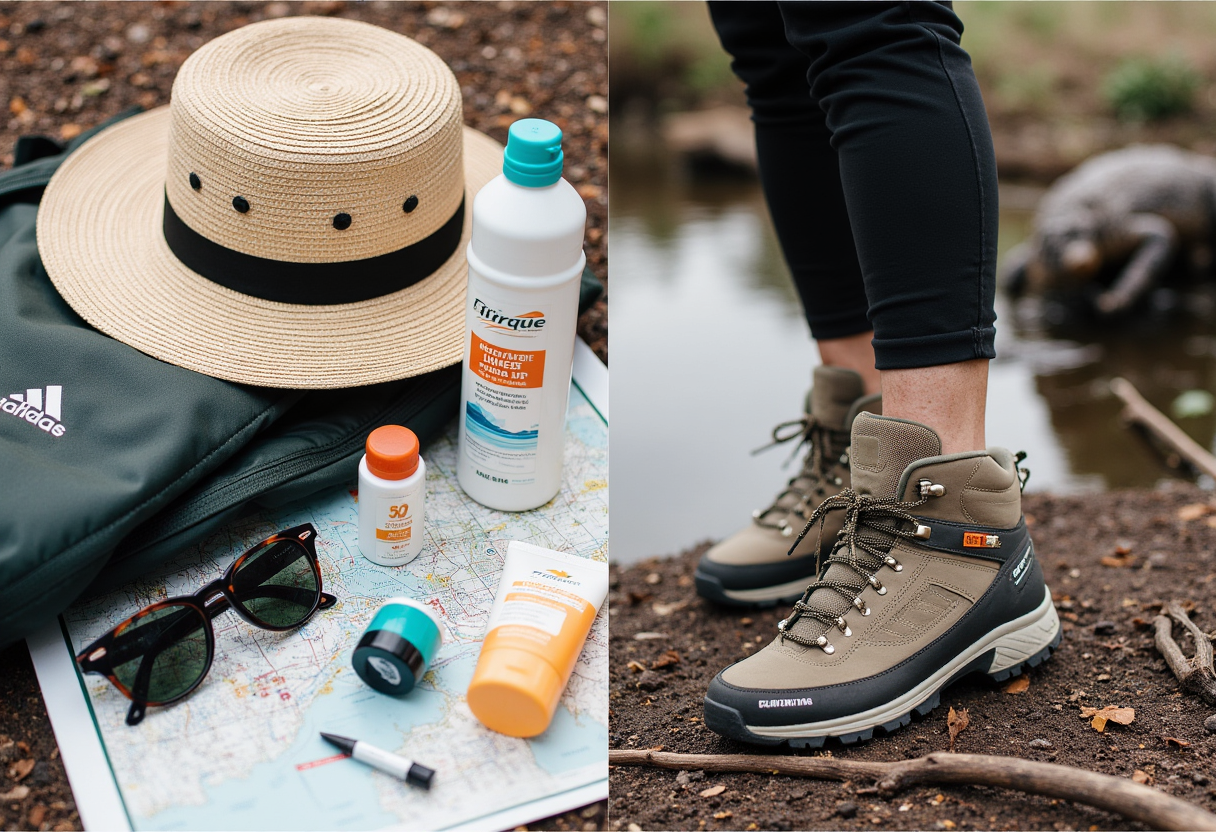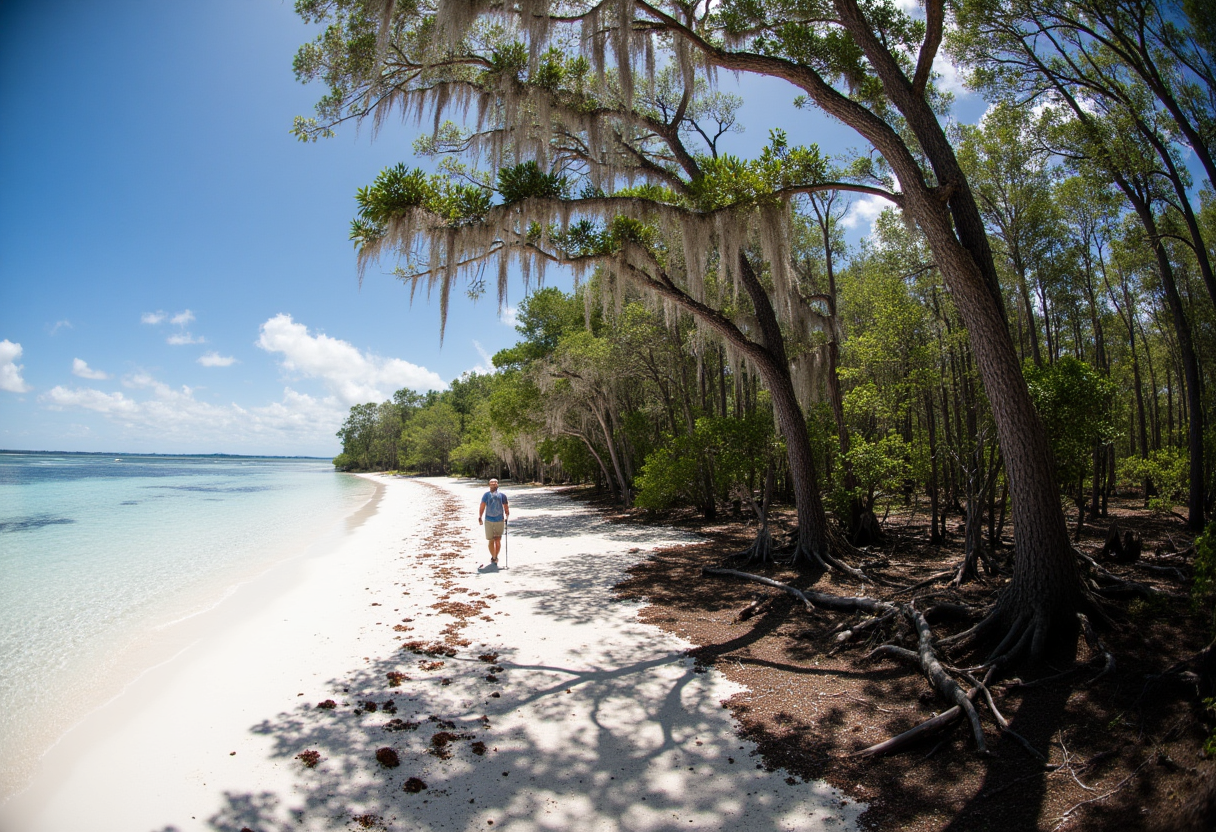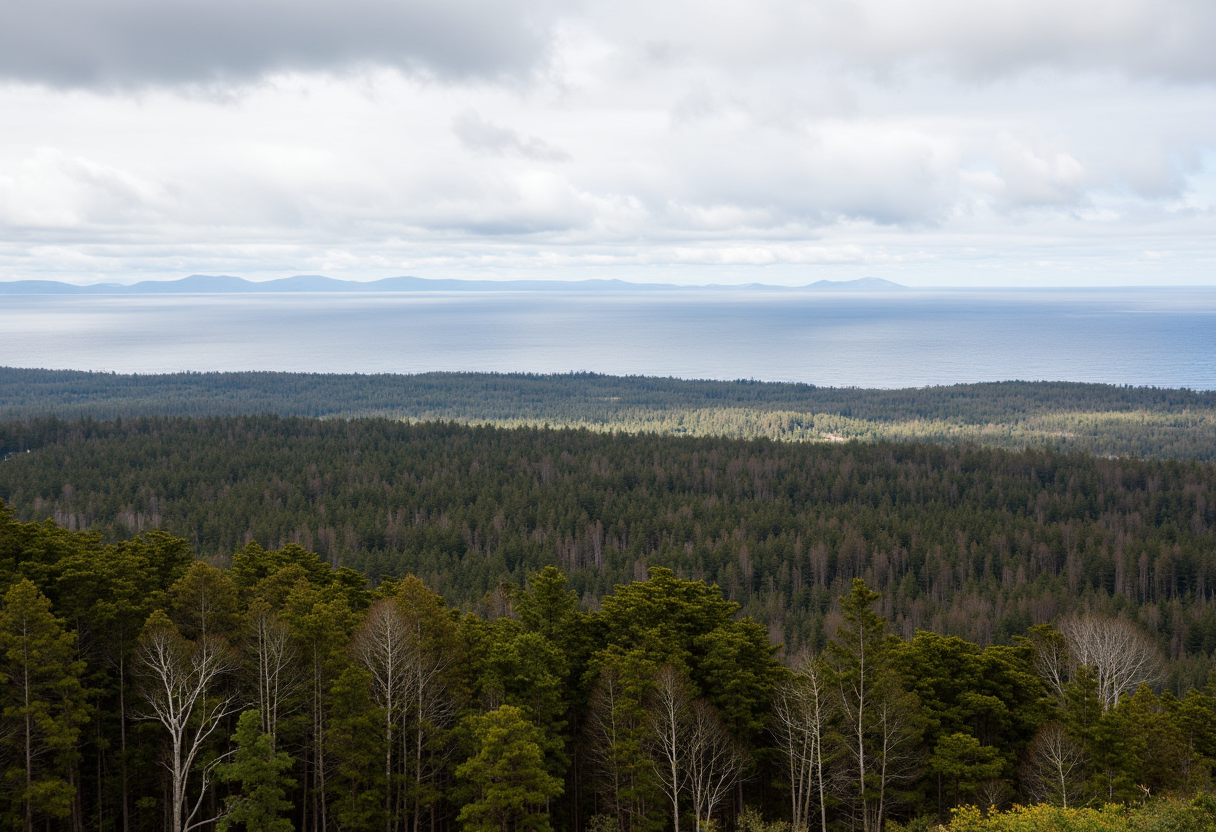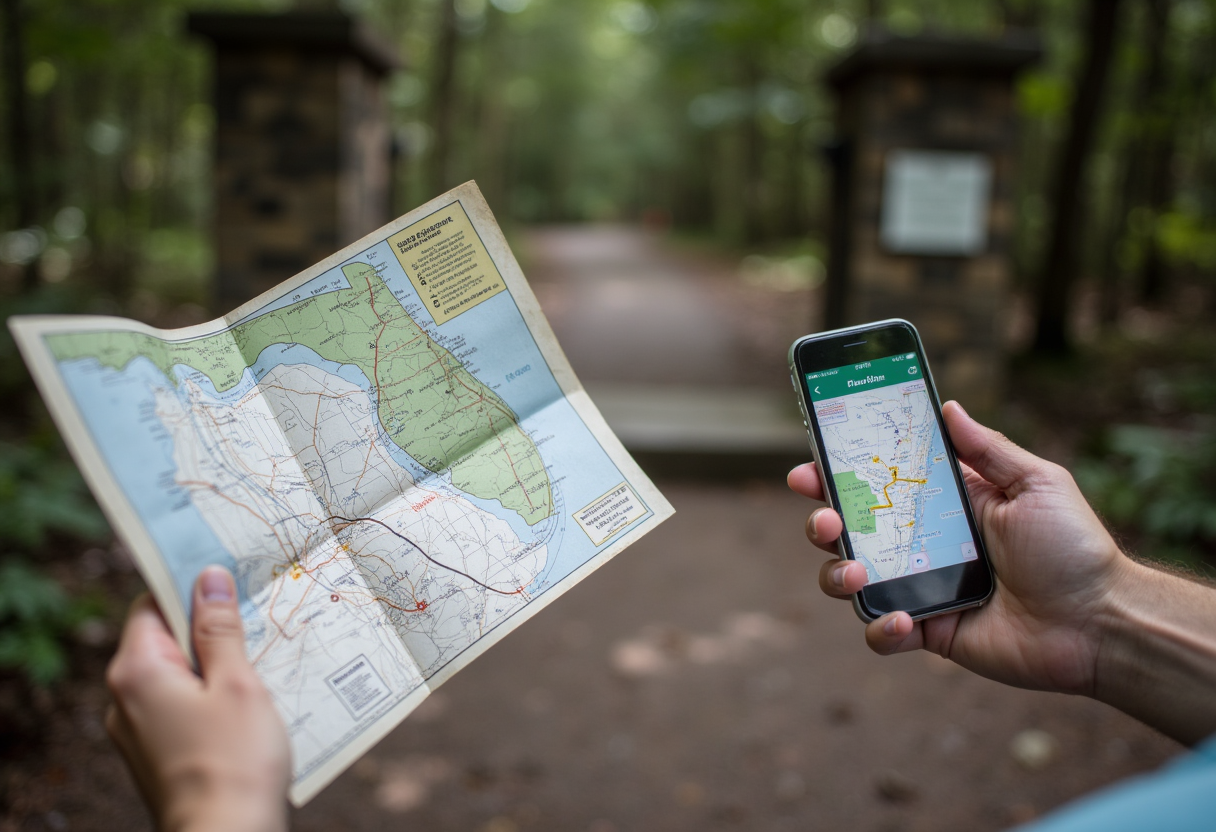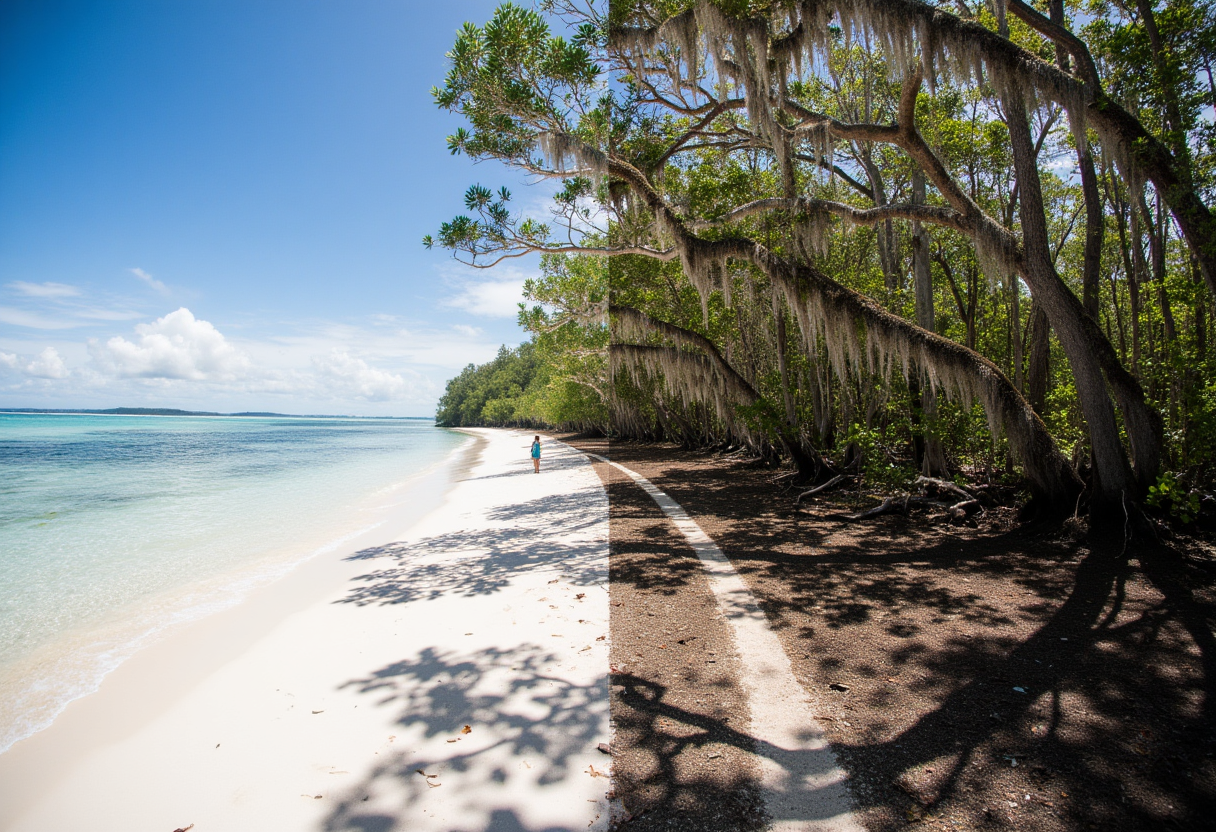Florida's Wild Paths: A Guide to Hiking the Sunshine State
When most people think of Florida, they picture sun-drenched beaches, theme parks, or leisurely golf carts.
But the Sunshine State also hosts a vast, vibrant, and surprisingly diverse network of hiking trails that reward walkers and hikers with ancient forests, whispering cypress swamps, and panoramic coastal views.
Trade your flip-flops for proper footwear for at least a few hours and discover a range of walks from easy boardwalk loops to more rugged backcountry routes.
Where is the Best Hiking in Florida?
"Best" depends on what you want: wildlife viewing, a family-friendly stroll, a long day hike, or a multi-day route. Still, a few destinations consistently top lists for beauty and accessibility.
Everglades National Park — Anhinga Trail (Everglades)
For an iconic taste of Florida's wild side, head to Everglades National Park. The Anhinga Trail is a short paved and boardwalk loop ideal for casual walking and excellent wildlife viewing. Expect close-up sightings of alligators, turtles, and wading birds — perfect for photographers and families. Best time: morning or late afternoon for cooler temperatures and active wildlife. Accessibility: paved boardwalks; stroller- and wheelchair-friendly in many sections. Tip: check the National Park Service site for current trail conditions and any seasonal closures.
Black Bear Wilderness Area — Sanford
North of Orlando, the Black Bear Wilderness Area offers a more natural experience. This nearly 10,000-acre tract features loop routes (the commonly noted loop is roughly 7–8 miles depending on connectors) through pine flatwoods, cypress swamps, and along the St. Johns River. Expect natural-surface trails, some wet sections during rainy season, and limited shade on exposed stretches. Ideal for day hikers who want solitude and a decent workout. Note parking is at trailheads near Sanford and check county park pages for permits or access notes.
Ocala National Forest, Big Cypress, and State Parks
Other top areas include Ocala National Forest — known for spring-fed swims and mixed-use trails — and Big Cypress National Preserve, which offers rugged, often wet-season challenges for experienced hikers.
State parks such as Paynes Prairie Preserve State Park provide accessible trails with outstanding wildlife viewing (wild horses and bison are commonly seen on designated routes).
These places illustrate how Florida compresses many ecosystems into one state: dry scrub, hardwood hammocks, pine flatwoods, and watery sloughs.
A vibrant, close-up shot on the Anhinga Trail boardwalk in Everglades National Park. A clear view of a large alligator basking very close to the edge of the boardwalk, with turtles sunning nearby.
Quick practical notes: list expected miles and difficulty before you go, check for seasonal wet spots, and plan parking/camping logistics ahead of time. If you're planning photos or extended routes, consult trail maps from park websites or apps like AllTrails for route information and user reports.
Ideal for: birders and wildlife photographers (Everglades, Paynes Prairie), moderately fit hikers seeking backcountry routes (Black Bear Wilderness, Big Cypress), and families or casual walkers looking for short nature walks (Anhinga Trail, many state-park boardwalks).
Before you head out today, check official park pages for trail conditions, download an offline map, and pack water, sun protection, and insect repellent — basic preparation makes any Florida hike more enjoyable and safer.
The Legendary Florida Trail: What is the Famous Florida Trail?
If you're looking for a true long-distance hiking experience in Florida, the Florida National Scenic Trail — commonly called the Florida Trail (FT) — should be on your radar. Praised by thru-hikers and walking enthusiasts alike, the FT connects a remarkable variety of ecosystems across the state.
Quick facts: the FT is roughly 1,300 miles long, running from Big Cypress National Preserve in South Florida to Gulf Islands National Seashore in the Panhandle. It is the state's longest continuous hiking route and passes through or near national parks, state parks, and other public lands.
What you'll cross
The trail traverses cypress swamps (expect wet sections during the rainy season), pine flatwoods, hardwood hammocks, prairies, and the rolling, hillier terrain of the Panhandle. That variety makes this trail unique among U.S. hiking routes: you can experience subtropical wetlands one day and sandy coastal ridges the next.
When to hike and what to expect
Many thru-hikers choose late fall through winter to limit exposure to Florida's heat and humidity; however, sections are hiked year-round depending on local weather.
Wet-season conditions can leave some segments knee-deep in water, so waterproof footwear or willingness to "embrace the squish" is practical advice for several stretches.
Practical considerations for thru-hikers and section hikers
A dynamic composite image or a well-composed still life that visually represents the essential Florida hiking tips.
Gear: lightweight shelter/tent (for unsupported stretches), waterproof boots or shoes, insect protection, sun protection, and reliable water treatment for stretches with uncertain sources.
Resupply & logistics: plan resupply towns for longer route segments; many thru-hikers arrange mail drops or use nearby towns for food and gear replenishment.
Permits & access: most FT sections are on public land with no thru-hike permit, but individual parks or preserves may require fees or have camping rules — check local park pages for current information.
Safety & hazards: carry a map and offline navigation, be prepared for wet and muddy terrain, and respect wildlife (alligators in lowland areas). Seasonal conditions and closures can change route access — always verify before you go.
Who maintains the trail?
The Florida Trail is supported by a network of volunteers and organizations, most notably the Florida Trail Association. These hiking organizations and local volunteer groups maintain routes, provide updates,
and support conservation work to keep the FT open and accessible. For official maps, current trail status, volunteer opportunities, and membership information, consult the Florida Trail Association and related hiking clubs and groups.
Suggested next steps: review the FT maps from the Florida Trail Association, join a local hiking club or hiking organization for group trips or trail maintenance events, and plan a sample section hike to test logistics before attempting a thru-hike.
Taming the Trails: Essential Tips for Florida Hiking
Florida hiking offers incredible rewards, but it also requires specific preparation. Below are concise, actionable tips to keep your hikes safe, comfortable, and fun—whether you're out for a short walk or a multi-day route.
Hydration & heat management
A panoramic or composite image showcasing the surprising diversity of Florida's hiking trails. On one side, show a sun-drenched, pristine coastal trail with white sand and clear turquoise water.
Bring more water than you think you'll need—plan on at least 0.5–1 liter per hour of moderate activity in hot, humid conditions; increase for strenuous hikes or high temperatures.
Use electrolyte tablets or sports drinks for longer hikes to replace salts lost through sweat.
Schedule hikes for cooler parts of the day (early morning or late afternoon) and take regular shade breaks to reduce heat strain.
Sun protection
Wear a wide-brimmed hat, UV-blocking sunglasses, and SPF 30+ sunscreen. Reapply sunscreen every two hours or after heavy sweating.
Light-colored, breathable long sleeves and pants protect skin while keeping you cooler than dark, heavy fabrics.
Insects & wildlife
Use EPA-approved insect repellent (DEET, picaridin, or oil of lemon eucalyptus) on exposed skin and permethrin-treated clothing for extra protection against mosquitoes and ticks.
Respect wildlife: observe from a distance, never feed animals, and keep dogs leashed where required. For alligators, maintain a wide berth—do not enter or approach the water's edge.
Footwear & trail etiquette
Choose waterproof hiking shoes or boots with good traction—many Florida trails have roots, sand, mud, or standing water. Sandals are fine only on short, paved boardwalks.
Stay on marked hiking trails to protect fragile habitats and avoid getting lost. Yield to other trail users and pack out all trash to support conservation.
Day vs. overnight hike planning
A breathtaking landscape shot that emphasizes Florida's "horizontal wonders" over vertical gains. The image stretches wide, showcasing a vast, diverse panorama that might include a pristine pine forest
Day hikes: pack at minimum 1–2 liters of water, snacks, sun/insect protection, a basic first-aid kit, and a charged phone with an offline map or screenshot of the route.
Overnight/backcountry: plan resupply points or mail drops for longer multi-day segments, carry a water filter or purification system, tent/shelter, sleeping gear, and an emergency locator or satellite communication device in remote areas.
Navigation, safety & resources
Download maps for offline use from trusted apps (AllTrails, Hiking Project) and print or screenshot park trail maps as a backup.
Check park alerts and trail conditions on official state park or national park pages before you go; some sections close seasonally or after storms.
Consider joining local hiking clubs or the Florida Trail Association for guided outings, route information, and community resources.
Quick checklist before you go: water, sun protection, insect repellent, appropriate footwear, map (offline), snacks/food, first-aid kit, and a plan for emergencies. With a little preparation, Florida's hiking trails reward you with remarkable wildlife, varied landscapes, and memorable walking experiences.
What State is Ranked #1 for Hiking? (And Why Florida's Still a Contender!)
When people debate the "best" state for hiking, states with big vertical gain — Colorado, California (Sierra Nevada), or the Appalachian regions of North Carolina — often top the rankings. Those lists favor steep climbs, high passes, and dramatic summit views, and for many hikers those characteristics rightly define a great hike.
Why Florida deserves a seat at the table
Florida doesn't compete on elevation; it competes on variety, accessibility, and wildlife. The state compresses a remarkable range of ecosystems into relatively short distances — subtropical swamps, pine flatwoods, hardwood hammocks, coastal dunes, and freshwater springs — so a single day can deliver very different walking experiences.
How Florida compares (at a glance)
Biodiversity: Florida's mix of wetlands, forests, and coastlines offers rich wildlife viewing opportunities that rival many mountainous states for birding and animal encounters.
Accessibility: Many trails are family-friendly boardwalks or short loops (great for walking and casual hikes), while the Florida Trail and national/state parks provide longer hikes and backcountry routes for serious hikers.
Comfort & injury risk: Lower elevation means less knee-straining descents; however, heat, humidity, and wet-season conditions present different risks to plan for.
Best match by hiker type
Family / casual walkers: Boardwalk loops and short nature trails (e.g., Anhinga Trail) — accessible and excellent for wildlife photos.
Birders & photographers: Everglades, Paynes Prairie, and coastal preserves offer outstanding opportunities to spot wading birds, raptors, and rare species.
Section & long-distance hikers: The Florida Trail provides opportunities for multi-day routes without extreme elevation but with varied terrain and ecosystems.
Put another way
If you measure a state's hiking "rank" only by vertical relief and summit views, Florida will never top that specific list.
But if you value accessible, varied routes, exceptional wildlife viewing, and the ability to experience different habitats in a single day,
Florida is a strong contender and an underrated destination compared to places like New York (Appalachian sections), international trekking destinations in New Zealand, or hiking networks in the United Kingdom.
Ready to plan your next hike? Pick the type of experience you want (wildlife, long routes, family-friendly walks), then choose a region and check trail maps and park alerts. Florida’s horizontal wonders are waiting — no summit required.
Navigating Nature: Finding Your Way with a Florida Hiking Trails Map
Ready for your next hike? Finding and navigating Florida's routes is simpler than ever if you use the right resources and plan a little before you go.
Where to get reliable maps and information
Official park pages: Most Florida State Parks and National Parks/Preserves publish downloadable trail maps and visitor information at their websites or visitor centers — always the first place to check for closures, access rules, and weather alerts.
Florida Trail Association: The FTA provides authoritative route maps, status updates, and guidance for the Florida Trail network — great for planning section hikes or thru-hike logistics.
Popular apps and sites: AllTrails and Hiking Project offer user reviews, photos, mileage, difficulty ratings, and downloadable maps that are useful for planning and for following routes in the field.
A practical and reassuring image of a hiker (hands only or partial view) using a combination of traditional and modern navigation
Recommended apps/sites (quick pros/cons)
AllTrails — large database, user photos & reviews; offline maps available with subscription.
Hiking Project — community-driven trail data and routes; free offline options on some platforms.
Florida Trail Association — official FT maps, route notes, and conservation updates; best for long routes and organization contacts.
Planning checklist for route navigation
Download an offline map or screenshot the route on your phone.
Print or pick up a park trail map as a backup.
Note trailhead access, parking, and nearest resupply points for multi-day routes.
Save emergency contacts and park ranger numbers; tell someone your plan and expected return time.
Check weather and trail alerts the morning of your hike.
How to read Florida trail markers & safety tips
Trail blazes and signs vary by park — study the specific park map and look for color-coded blazes or numbered posts. If a route seems to disappear into marsh or private land, consult the map rather than guessing a shortcut.
In areas with intermittent cell service, rely on downloaded GPX routes or paper maps. A basic compass and ability to orient by landmarks is useful on longer or backcountry routes.
(Diversity of Florida Trails - Contrasting Views): A panoramic or composite image showcasing the surprising diversity of Florida's hiking trails.
For your next hike, use a combination of official park maps, apps (downloaded for offline use), and local hiking groups or the Florida Trail Association for the most current route information and community guidance. Good navigation makes every walk safer and more enjoyable — and reduces the chance you'll be the subject of a long "lost on the trail" story.
Conclusion
Florida is more than just a vacation destination; it’s a state of diverse landscapes and excellent hiking opportunities for walkers, day-hikers, and long-distance trekkers alike.
Plan your next hike: pick a region (Everglades, Central Florida springs, Panhandle), choose a route that matches your fitness and experience, check trail and weather information,
download or print a map, and pack essentials—water, sun protection, insect repellent, appropriate footwear, snacks/food, and a basic first-aid kit.
Get involved: join local hiking clubs or the Florida Trail Association to find group hikes, volunteer on trail maintenance, and share photos from your adventures. These hiking organizations and community groups are great resources for route advice, conservation efforts, and finding like-minded hikers.
Whether you want an easy boardwalk walk with fantastic wildlife viewing or a multi-day section of the Florida Trail, the Sunshine State offers routes and places that reward curiosity and careful planning. Check park alerts and trail status today—and then hit the trail.
"Thanks for reading. Until next time, keep exploring Florida's peculiar charm!"
Florida Unwritten Staff

